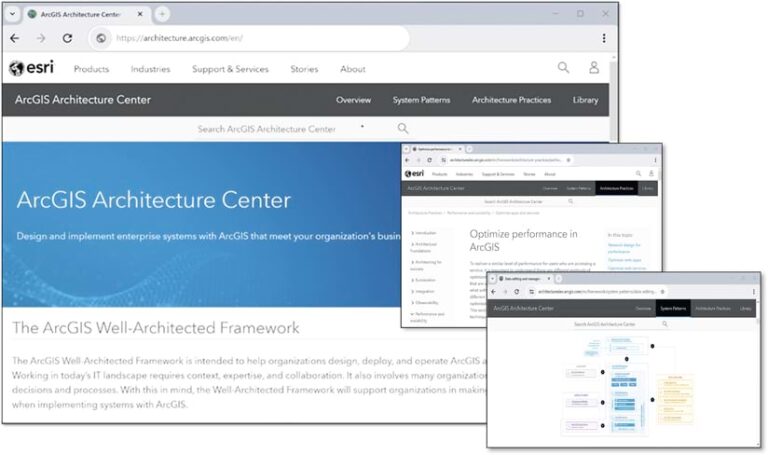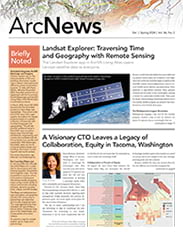Designing, implementing, and operating effective enterprise systems in today’s IT landscape often requires extensive knowledge and expertise in technology and the business objectives that the systems are intended to support. The ArcGIS Architecture Center is a resource that empowers IT professionals, system architects, GIS professionals, and support team members by providing foundational information about ArcGIS products such as ArcGIS Enterprise, ArcGIS Online, and ArcGIS Pro. It also guides organizations in making knowledgeable decisions when ArcGIS systems are implemented.
While GIS professionals have long been adept at navigating and utilizing geodatabases, mapping interfaces, and designing user workflows, this new resource extends their expertise to support working with IT professionals in building out ArcGIS systems.

Essentially, the ArcGIS Architecture Center is a bridge, providing system patterns, best practices, and a full architecture library to ensure that IT professionals have the necessary resources for their organization’s ArcGIS infrastructure. It brings together years of collective experiences, recommendations, and best practices for building enterprise systems from across Esri and its community of distributors, partners, and users.
The website has four main sections:
- The Overview section provides information on ArcGIS written for IT professionals—how it’s designed, its functional capabilities, how its products support different deployment and operational models, and how it integrates with different IT landscapes.
- The System Patterns section presents eight system patterns—common and composable examples of how users can build systems with ArcGIS. The key capabilities of each pattern are described in detail, along with different deployment options, deployment considerations, and potential integrations with other system patterns. These ArcGIS system patterns are abstractions of actual systems, describing the most common types of geospatial systems that organizations implement with ArcGIS software and services.
These are the eight system patterns:- Location services
- Self-service mapping, analysis, and sharing
- Enterprise application hosting and management
- Data editing and management
- Imagery data management
- Mobile operations and offline management
- Big data analytics
- Real-time data streaming and analytics
- The Architecture Practices section introduces concepts and best practices centered on six key architectural pillars—automation, integration, observability, performance and scalability, reliability, and security—that are relevant for any ArcGIS system. Designing and building with ArcGIS doesn’t have a one-size-fits-all framework, but this section provides guidance and considerations and supports a more advanced and effective architecture process for various systems and projects.
- The Architecture Library has documents, presentations, videos, samples, and other assets to assist users in designing and implementing well-architected systems with ArcGIS. These items can build on existing ArcGIS system patterns and architecture practices or may be related to specific industries, deployment environments, or integration technologies. This section provides the most up-to-date resources.
The content on this site allows users to explore specific topics of interest or simply peruse a design pattern or technical pillar. As users become more familiar with the content, they can keep reading for more information or obtain hands-on experience by designing or testing systems based on the provided ArcGIS system patterns. The site also includes information on key ArcGIS additions, updates, and changes.

